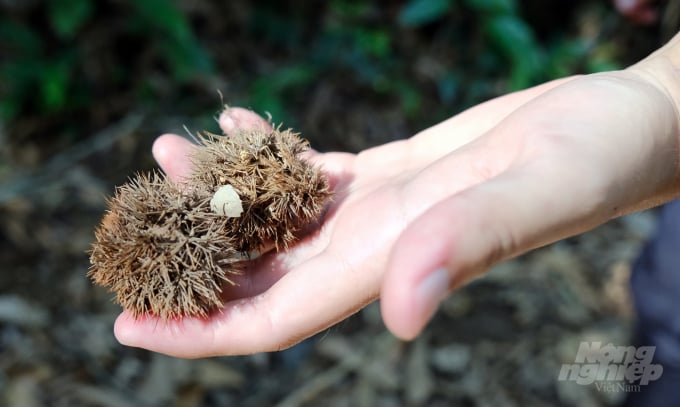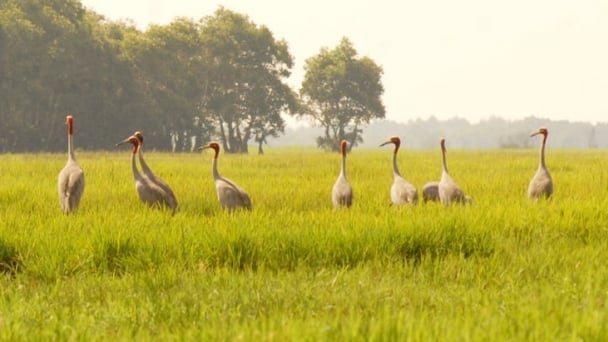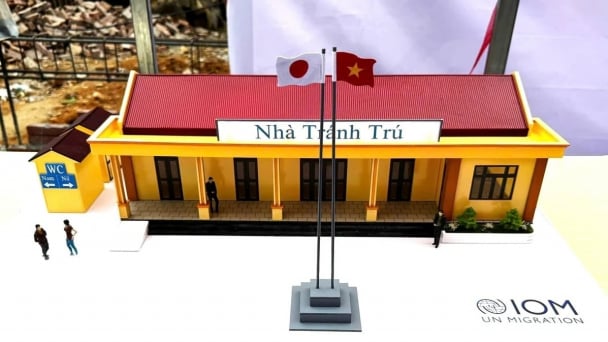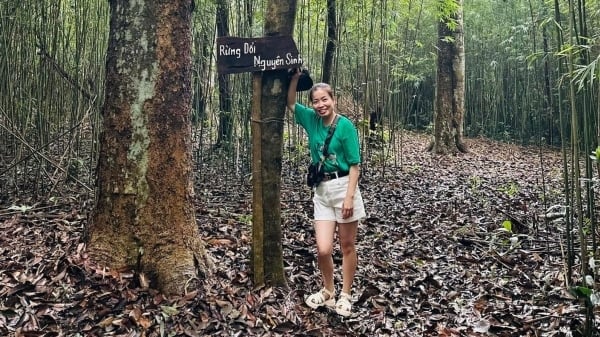August 2, 2025 | 14:09 GMT +7
August 2, 2025 | 14:09 GMT +7
Hotline: 0913.378.918
August 2, 2025 | 14:09 GMT +7
Hotline: 0913.378.918
Fagus sylvatica, also known as beech, is an endemic tree to the northern province of Phu Tho. It is the most common tree in temperate regions such as Europe, North America, and Australia. In some places, it accounts for 80% of the forest area.
Compared with common woods on the market, beech is much harder and stronger.
Beech is also easy to process, easy to turn dry, able to suffer from strong crashes, suitable to steam bending and well maintain colours of paint regardless of Vietnam’s hot and humid weather.
Because of its advantages, Vietnamese consumers are more and more interested in using beech. However, most of the beechwood sold in Vietnam is imported.
Few beeches are being preserved by the Center for Forestry Science in the northern region based Chan Mong Commune, Doan Hung District in Phu Tho Province.
Although beech is the dominant tree species in the restored secondary forest, it is difficult to preserve the precious genetic resources of this species because its regeneration ability is medium and low. On average, only three to 11 trees can be found in an area of one hectare.

Breech fruit found in the protection forest in Chan Mong Commune, Doan Hung District in Phu Tho Province. Photo: Bao Thang.
Pham Quang Tu, a forestry scientist from the Center for Forestry Science in Northern Region said that beech was reported to grow in Phu Tho Province and some areas in Vietnam but he and his colleague only found beech in Chan Mong protection forest.
Whenever having a working trip to the forest, he usually stayed there for few days or even a week to look for beech fruits, observe new species and take note of the growth of preserved trees.
Besides working at the protection forest, Tu also usually travel to localities across Vietnam to find new species.
He would select species that were suitable to Phu Tho soil and proposed to grow them at the centre’s garden, Tú said.
The young scientist born in 1991 said that he spent more time in the forest than at home. He got used to bites of mosquitoes, bees, leeches and snakes, he said.
On hot days with a temperature of 35-40 degrees Celsius, Tu still wore two or three long-sleeved shirts, long trousers, boots and plastic pieces covering almost all of his body.
Tu said that when he started working at the forestry science centre a few years ago, he failed to distinguish beech and dẻ đỏ (Lithocarpus Duchampian Hickel etA.camus) – a popular trees in Phu Tho Province.
After six years, Tu said that he had to carefully look at the leaves and flowers to recognise a beech.
Tu especially liked looking for beech fruit – which is eatable and looks like a small hedgehog.
It was difficult to find beech fruits among layers of rotten leaves and mud in the forest, Tu said.
However, it was more difficult to convince local farmers to grow new species and apply new farming techniques, the forestry scientist added.
Scientists like Tu had to study, grow and nurse the trees first at the centre’s garden and then show people the benefits of the trees. Only after seeing such benefits, particularly economic ones, local farmers were engaged in growing and protecting the trees.

Tu is looking for beech fruits in the forest. Photo: Bao Thang.
In 2015, scientists discovered two new species of beech, scientifically known as Castanopsis grandicicatricata and Castanopsis multiporcata, in Xuan Son National Park in the northern Phu Tho Province.
Castanopsis grandicicatricata has thick papery leaves, cupules of six to seven centimetres in diameter and scar covering two-thirds of the nut. The nuts are said to generate high economic benefits
Castanopsis multiporcata's leaf blade is five to eight centimetres long, has leaf texture of papery firmness, is abaxially glabrescent and has six to 10 pairs of secondary veins. It also has 0.3 to 0.7-cm long petioles, two to 2.5-cm diameter cupules and concave scar.
![Golden sea, sustainable vision: [3] Fisheries co-management towards UN Development Goals](https://t.ex-cdn.com/nongnghiepmoitruong.vn/608w/files/content/2025/08/01/ngu-dan-3-155002_353-090350.jpg)
(VAN) The community-based philosophy of fisheries co-management has transformed management thinking, empowering fishers to work together to protect the marine environment and promote sustainable livelihoods.

(VAN) Tram Chim National Park is striving to restore its natural habitat in hopes of bringing back the red-crowned cranes and establishing a breeding population in the Dong Thap Muoi.
![Golden sea, sustainable vision: [2] Revitalizing fisheries, reducing IUU violations](https://t.ex-cdn.com/nongnghiepmoitruong.vn/608w/files/chinq/2025/07/30/4659-dsc04845-134645_15.jpg)
(VAN) The Tan Thuan fishing community task force provided 126 valuable leads to functional agencies, helping to prevent and penalize 65 violations.

(VAN) The International Organization for Migration (IOM) has reaffirmed its commitment to continue providing technical assistance, policy advice, and capacity building based on the priorities proposed by the Vietnamese side.
![Golden sea, sustainable vision: [1] The concerns of veteran fishermen in coastal areas](https://t.ex-cdn.com/nongnghiepmoitruong.vn/608w/files/content/2025/07/30/bien-ham-thuan-nam-lam-dong-binh-thuan-130242_21-083526.jpeg)
(VAN) For the hundreds of fishermen in Tan Thanh commune, restoring marine resources serves as a guiding principle that drives their direct involvement in protecting the sea alongside local authorities.

(VAN) The ecotourism development project in protection forests opens up opportunities to boost the economy in tandem with forest conservation, laying the foundation for sustainable development in Quang Ninh.
![Wood processing for export under EUDR: [3] Adaptive solutions](https://t.ex-cdn.com/nongnghiepmoitruong.vn/608w/files/huyenvt (e)/2025/07/28/5937-1-194314_293.jpg)
(VAN) To resolve bottlenecks and remove difficulties for the exported wood processing industry, the People's Committee of Gia Lai Province has implemented solutions to adapt to EUDR regulations.